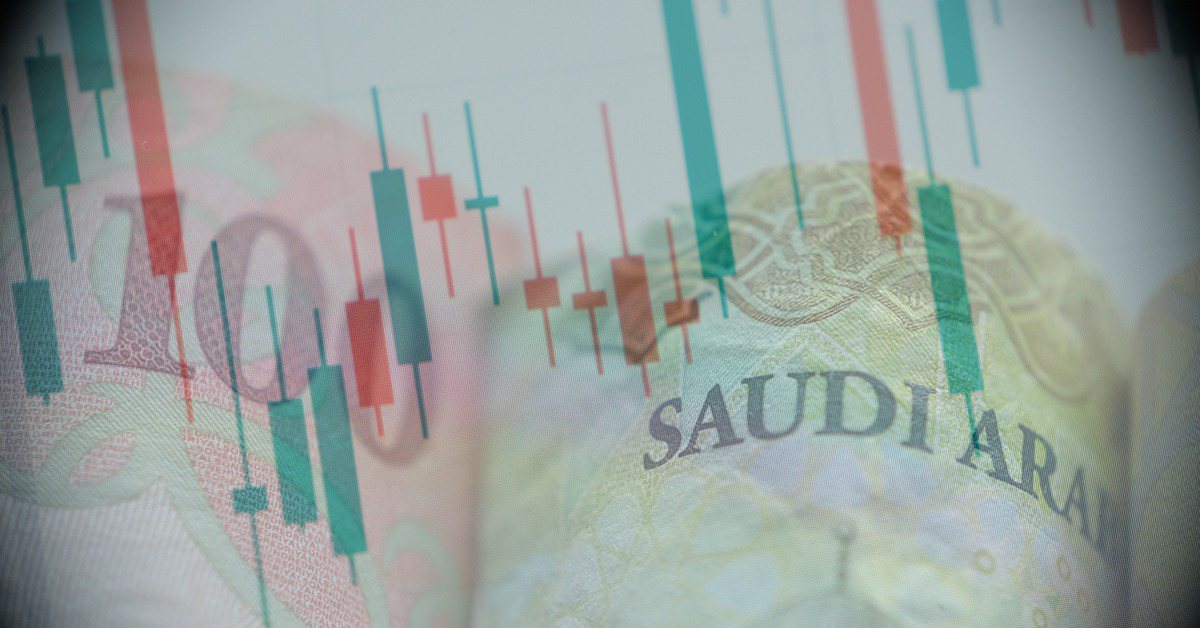From infrastructure and SMEs to fintech, a thriving banking sector is taking a major role in the kingdom’s economic overhaul.

One of the world’s most economically shut off countries a decade ago, Saudi Arabia is now the fastest growing G20 nation and the Middle East’s most vibrant economy, thanks at least in part to Vision 2030, a radical reform program initiated by Crown Mohammed bin Salman in 2016.
“The Saudi economy is booming, spurred by high oil prices, a strong pickup in private investment and reform implementation,” said the International Monetary Fund in its latest Article IV publication.
The crown prince’s leadership has suffered the disfavor of Western governments, owing to the murder of Saudi journalist Jamal Khashoggi, a broad crackdown on dissent, and a long and bloody war in Yemen. But Saudi banks, among the wealthiest in the region, are riding the economic growth wave. Local lenders started 2023 on very solid ground; last year, the combined annual net profit of the top five banks reached $13.7 billion, and in the first four months of 2023, net profits at the top 10 banks increased another 2.7%.
“Saudi banks are globally among the best capitalized in a well-regulated environment,” says Asad Ahmed, managing director at global consulting firm Alvarez & Marsal’s Dubai office. “They are a key sector of a strong economy that has shown good growth and resilience.”
In June, Moody’s upgraded the Saudi banking system from stable to positive, noting, “Demand for credit is high and loan performance is improving, and this is likely to translate into robust profit for banks.” The aggregate capital adequacy ratio is strong, the IMF noted, pointing to Riyadh’s recent adoption of global compliance requirements including IFRS9 and the Basel III post-crisis reforms, while “profitability—driven by net interest margins—is high and above pre-pandemic levels, and the non-performing loans ratio is low and declining. … Strong performance of banks is underpinned by ongoing efforts to modernize the regulatory and supervisory frameworks.”
Reorganizing Assets
The Saudi financial sector has thoroughly reorganized over the past few years, in line with Vision 2030. The leadership’s master plan to diversify the economy away from oil, which still accounts for 70% of revenue and exports, includes consolidating the local banking sector to create regional players, cut costs and boost efficiency.
Last year, National Commercial Bank and Samba Financial Group merged to create Saudi National Bank, the Arab world’s third-biggest lender with over $250 billion in assets. A year prior, Saudi Arabian British Bank joined forces with Alawwal Bank to create Saudi Awwal Bank, the kingdom’s fourth -argest lender with total assets worth $84 billion.
In line with the authorities’ ambitions, Saudi banks are expected to support the country’s rapid transformation: from funding infrastructure projects to boosting Saudi homeownership to increasing small to medium-size enterprises’ share of the economy. Between 2011 and 2022, Saudi banks’ loan volume increased at a 9.6% compound annual growth rate while deposits grew 6.8%, according to Boston Consulting Group, citing figures from the Saudi Central Bank (SAMA).
But while Saudi Arabia has ample liquidity, boosted in recent years by high global energy prices, a total economic revamp will also depend on its ability to attract foreign direct investment.
“The local banking system alone will not be able to cater to all the needs,” argues Mohamed Damak, senior director and head of Islamic finance at S&P Global Ratings, “and therefore, the country is working on the development of the local capital market and, at the same time, allowing some space for international players to help resources mobilization.”
The strategy to mobilize international capital includes attracting foreign banks to set up in Saudi Arabia; the central bank has simplified the licensing process to encourage them to do so. In February, Bank of Jordan, Egypt’s Bank Misr, National Bank of Egypt, Oman’s Sohar International, Bank of China and the Trade Bank of Iraq were granted banking business licenses. They will join 16 other foreign banks including Deutsche Bank, BNP Paribas, JPMorgan Chase, Standard Chartered, Emirates NBD, First Abu Dhabi and Qatar National Bank, which have all entered the market in the past few years.
Building a Regional Tech Hub
Saudi Arabia also wants to position itself as a regional fintech hub, and its startup and fintech markets are growing exponentially, thanks partly to strong government and institutional support. Last year, Saudi fintechs raised $239 million, up 167% from 2021, according to Magnitt, a Dubai-based research firm. The kingdom saw 147 fintechs set up in 2022 from only 10 in 2018, but it hopes that is just a start. Last year’s fintech roadmap published by the government predicted that Saudi Arabia will be home to at least 525 fintech firms by 2030, creating 18,000 jobs and adding $3.5 billion to annual GDP. The authorities have also pledged to increase the share of bank SME loans from 5.7% in 2019 to 20% by 2030.
“There’s been a 180-degree shift in the attitude toward business in general,” says Amer Siddiki, a former Saudi banker who co-founded Themar, a Shariah-compliant crowdfunding platform in 2020. “It’s a fintech boom. The growth is there. The numbers are there. I meet so many people who are moving to the country just for that. There are lots of young, tech-savvy people, a lot of enthusiasm, a lot of vibrant energy. I feel the region now is coming out of its shell, and the world was not expecting it.”
Local lenders are stepping up their game in the digital space, be it through in-house development, acquisitions or investments in startups, innovation hubs or incubator programs. An open banking framework approved late in November, which allows third-party providers to access banks’ customer databases with application programming interfaces (APIs), is pushing Saudi lenders one step further, to practically reinvent themselves.
All Saudi banks are currently working on fitting their operations to the new requirements, as open banking is now compulsory. In June, local lender Bank Albilad was the first to complete the process. As of that same month, 12 tech companies received their open banking licenses from the central bank.
For foreign businesses, partnering with a locally licensed firm can be a way to penetrate a fast-evolving market without too much hassle. This was the case for London-based Strabo, a global consumer portfolio-tracking platform that has started expanding in Saudi Arabia through a partnership with Lean Technologies, the kingdom’s largest API provider.
“This means we have coverage of all of the top financial institutions there,” says Ben Waterman, co-founder of Strabo. “In years to come, this should be a pretty exciting opportunity.”
Saudi Arabia is also looking to be a leader in big data and artificial intelligence, a market that could grow to $150 billion in revenue in the GCC over the next several years, according to a recent study by McKinsey.
In this fast-changing environment, challenges remain. Entrepreneurs often cite the high cost of compliance in Saudi Arabia as an obstacle to growth. In a survey of 100 Saudi fintechs late last year by Impact46, a Riyadh-based asset management firm, and the global entrepreneur network Endeavour, half of respondents indicated they were spending more than $100,000 a year on compliance.
“For us, the biggest challenge is the central bank requirements on cybersecurity,” says Siddiki. “I’m not saying it’s not right, but it’s a big drain on cash flow. We did not forecast those numbers.”
Access to talent is another difficulty. Local labor laws make it compulsory for tech firms to hire Saudi nationals for several key positions, such as compliance and cybersecurity.
“It’s going to be difficult to find the guys and to be able to hire those guys, because usually they are coming from banks that are ready to pay big amounts to keep them,” says Siddiki.
That said, strong liquidity positions and government support give the Saudi financial sector a leg up in its quest to become a regional leader and major world player. In parallel, the development of local capital markets will play a role in completing the kingdom’s economic transformation. Seven years from now, will these advantages be enough?



